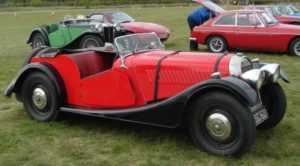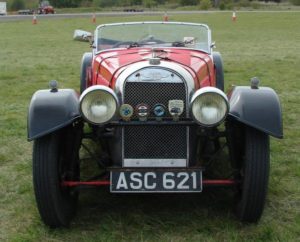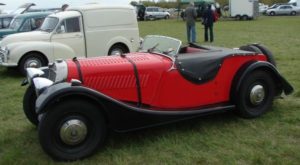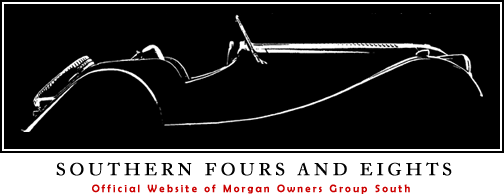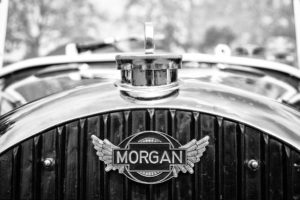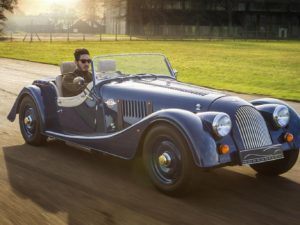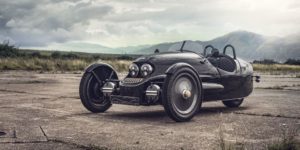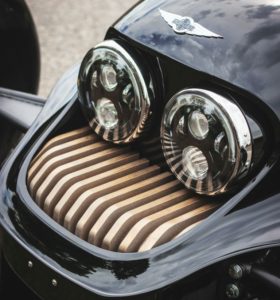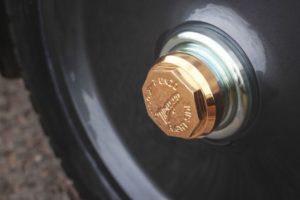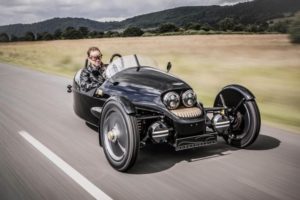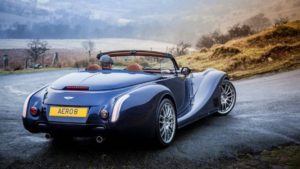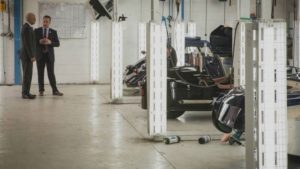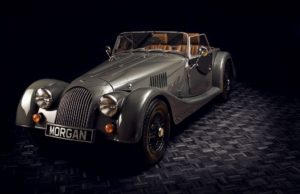
They just don’t make them like they used to, do they? The Golden Era of driving may seem to be a moving target (it should be up to the mid-’90s by now), but no matter when it was, we know that things were just better then; before all these safety and emissions regulations, before all these nannies, before… well, just before. But if there’s one car out there that disproves the myth, and reminds us that the best days are really the ones we’re living through at any given moment, it’s the Morgan 4/4, a British sports car that’s been in almost constant production for 80 years.
In 1936, most people hadn’t heard of television yet. Babe Ruth had just retired, Franklin D. Roosevelt was running for reelection for the first time, and our three most recent presidents hadn’t been born yet. World War II hadn’t started, the U.S. had 48 states, and the sun had yet to set on the British Empire. In the British West Midlands, the Morgan Motor company was celebrating its 26th year in business by releasing its first ever four-wheeled car. From 1910 to ’36, Morgan had produced a strange three-wheeled, two-seat car with a motorcycle-like V-twin engine mounted ahead of the front axle. And just to drive the point home that we’re living in the golden age, the Morgan three-wheeler was reintroduced in 2012.
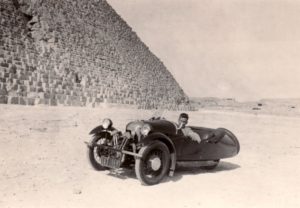
But back in ’36, its new model was distinctively more car-like. Dubbed the 4-4 because of its four wheels and 1.1. liter 34 horsepower Coventry Climax inline-four engine, the new roadster wasn’t unlike other sporty cars coming from other small British Automakers. It had a long, louvered top-hinged hood held down with leather straps, low-cut doors, and an ash wood frame under its aluminum body. The 4-4 wasn’t a speed demon, but for its era, it was a nimble and lively roadster, perfect for the sporting British gentleman. In 1937, a four-seat version was introduced, and in ’39, a Standard 38 horsepower 1.2 liter four became standard. It was the last major upgrade the car saw before England was plunged into World War II.
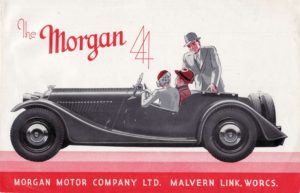
Throughout the course of the war, Morgan was kept busy building anti-aircraft gun parts and frames for military vehicles. In 1945, the British government gave the company permission to get back to building cars, with 50 three-wheelers and 75 4-4s built by year’s end. In 1949, Morgan decided to introduce a larger, more powerful version of its roadster, and call it the Plus 4. With a 2.0 liter 68 horsepower Standard four, and a 4-inch larger wheelbase, strengthened frame, revised suspension and hydraulic brakes, Morgan believed the updated car would be the way forward for the company, so they phased out the 4-4 for 1951, with the three-wheeler following suit and bowing out after ’52.
But there was something undeniably special about the smaller car, and in 1955, it was reintroduced as the 4/4 Series II. Now using the chassis from the Plus 4, the car received a host of upgrades, including disc brakes, a 36 horsepower 1.1 liter Ford four, and revised styling that abandoned the upright chrome radiator grille for a more aerodynamic design. Options included a heater, tachometer, and a “Competition” package that added two SU side-draft carburetors and bumped horsepower up to an even 40.
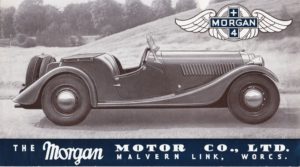
The 4/4 was a success for Morgan, but it also showed just how small the company was. It was largely unknown outside of England, and by the time Series II production ended in 1960, the company had hand-built just 386 of them. The Series III car bowed later that year, and despite looking virtually identical, its track was widened 2 inches, and it got a new 39 horsepower 0.7 liter Ford engine under the hood. Series IV and V came quickly throughout the 1960s, as the 4/4 received bigger engines, better brakes, and more robust suspension components, but on the surface, it had barely been changed since 1955.
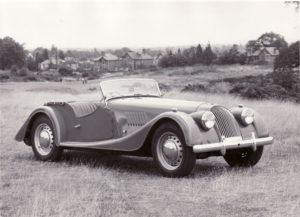
In 1968, the 4/4 hit its stride, receiving the 1.6 liter Ford Kent inline-four. In 1600 trim, the 4/4 would carry on largely unchanged for the next 25 years. Horsepower would reach the high-90s by the end of the 1970s, and in 1984, after 48 years, the 4/4 ditched its four-speed manual gearbox for a five-speed sourced from a contemporary Ford Sierra.
In 1986, the 4/4 turned 50, but you wouldn’t know to look at it. By then, you could find a poster of the Lamborghini Countach on the wall of every young gearhead’s bedroom, Porsche had introduced its radical all-wheel drive 200-plus mile per hour 959 supercar, and Ferrari was putting the finishing touches on its carbon fiber F40. In stark contrast, the 4/4 had its carbureted inline-four Ford engine, a hand-built, ash wood frame under an aluminum body, and a steering rack that had just been updated for the first time ever. Instead of being consigned to history, the 4/4’s anachronistic reputation had made it a worldwide cult car, and waiting lists were so long that many buyers were left waiting up to a year for their cars.
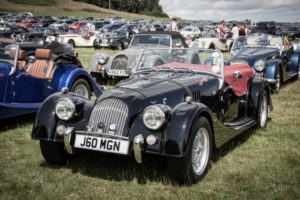
Safety and emissions regulations in the 1990s were tough on older models, and many would disappear from the world’s roads. Not so with the 4/4, which broke the 100 horsepower barrier for the first time in 1991 with a fuel-injected Ford inline four. Later, Ford’s Zetec engine provided 114 horsepower for standard cars, though between 2005 and 2009, a 125 horsepower “70th Anniversary” version served as the hottest 4/4 ever built. At the 70 year mark, fewer than 10,000 of the cars had been built; a testament to the company’s exacting hand-built standards.
Now 80 years on, the 4/4 is astonishingly still with us, and it’s shockingly similar to the first four-wheeled cars to roll out of Morgan’s Malvern, England shop way back then. A slight redesign in 2009 saw the removal of the car’s nondescript flat bumpers, letting the front and rear fenders fall to the outermost ledges of the car. It uses a 1.6 liter Ford Sigma engine (the same one found in a Focus) paired with a five-speed manual from Mazda, and is now good for 110 horsepower and 97 pound-feet of torque. Morgan says the car will go from a standstill to 60 in eight seconds flat, and top out at 115 miles per hour. Inside, the car has been tastefully updated, maintaining its heritage while not coming off as antique.
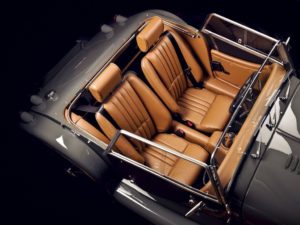
A brand new 4/4 would run you somewhere in the low $50K range – that is, if you could buy one in America. Unfortunately (though not surprisingly), they won’t pass safety and emissions standards here, so you’ll just have to be happy with whatever pre-1991 models you can import. Sure, it’s nuts to lust after essentially an 80 year old piece of technology, and you’re likely to get dusted off the line by a Toyota Corolla, but the Morgan 4/4 is a real, visceral link to the history of sports cars, and we’re incredibly lucky to still have it with us today. For those crazy gearheads who want nothing more than to put on a pair of driving gloves and marvel at how things today are the same as they ever were, the Morgan 4/4 is the greatest car in the world. May it live on another 80 years.
